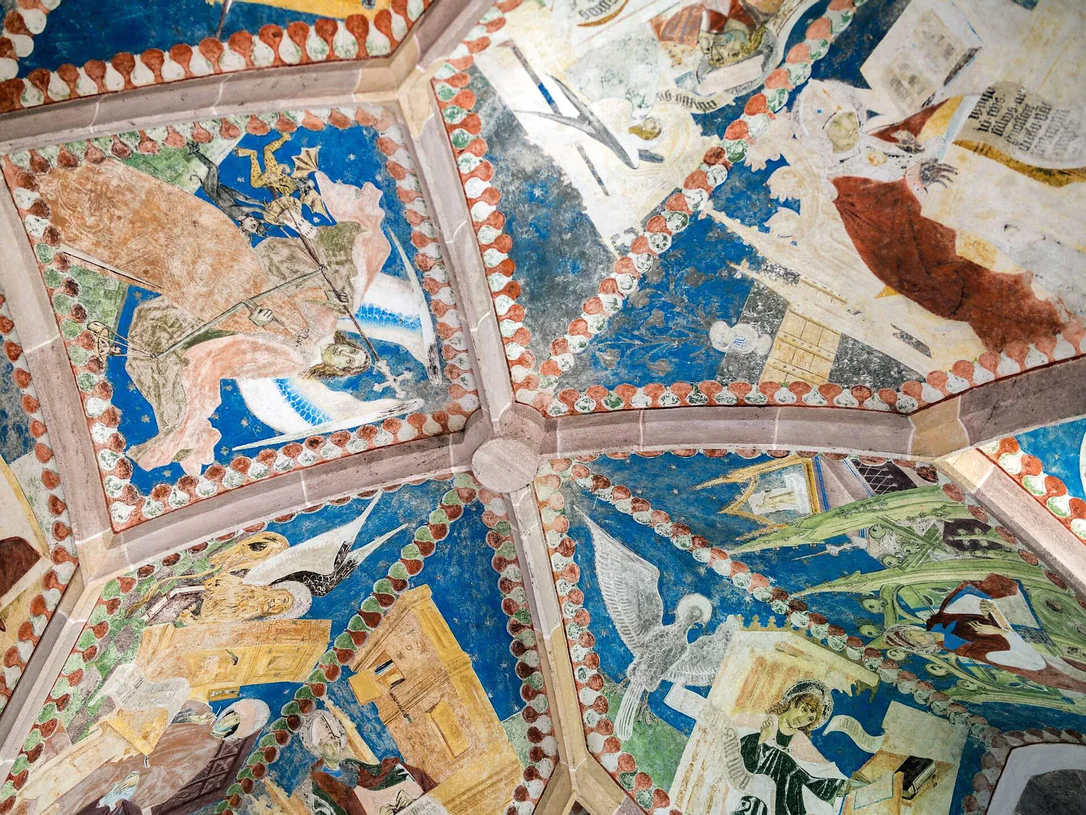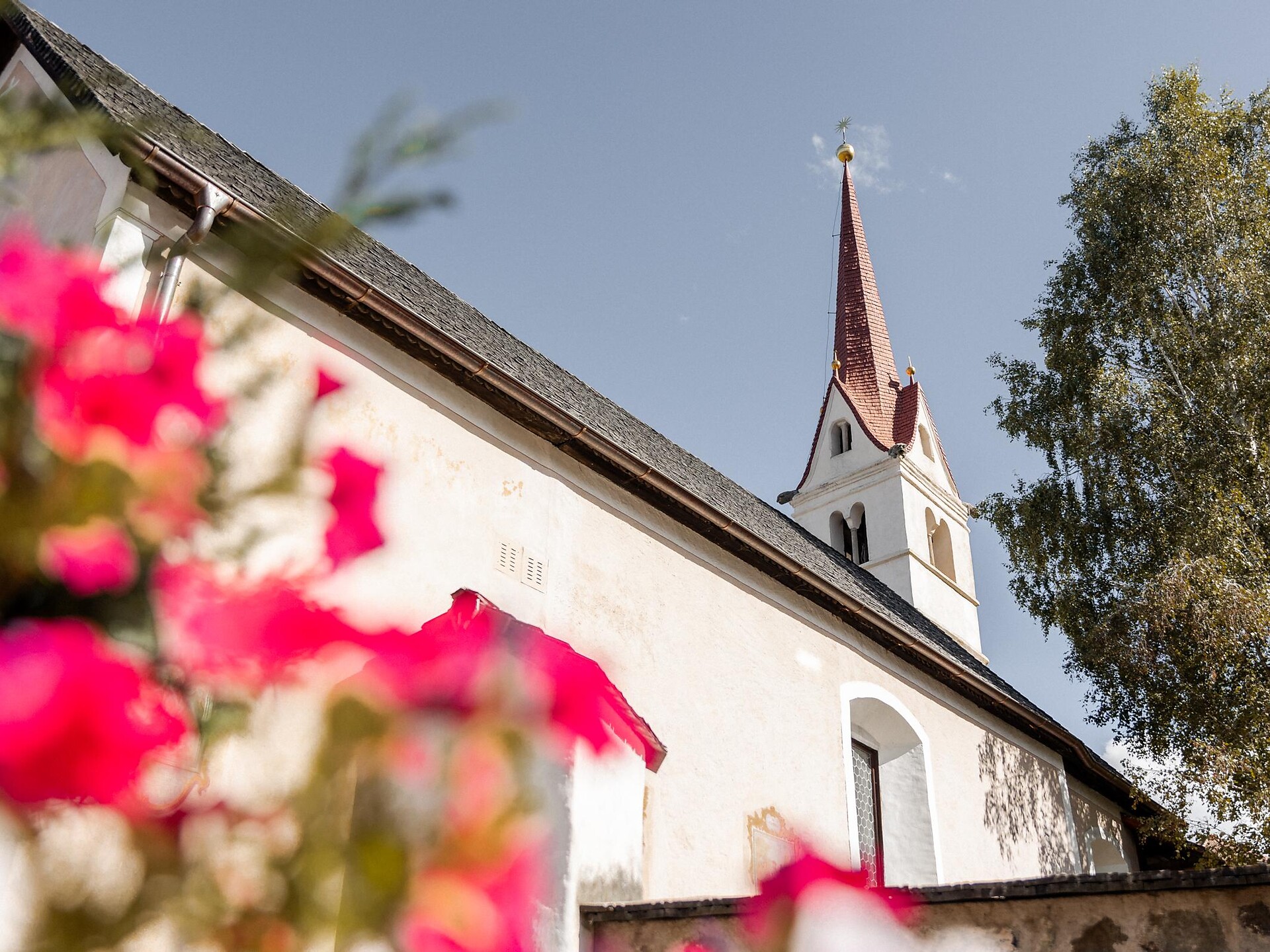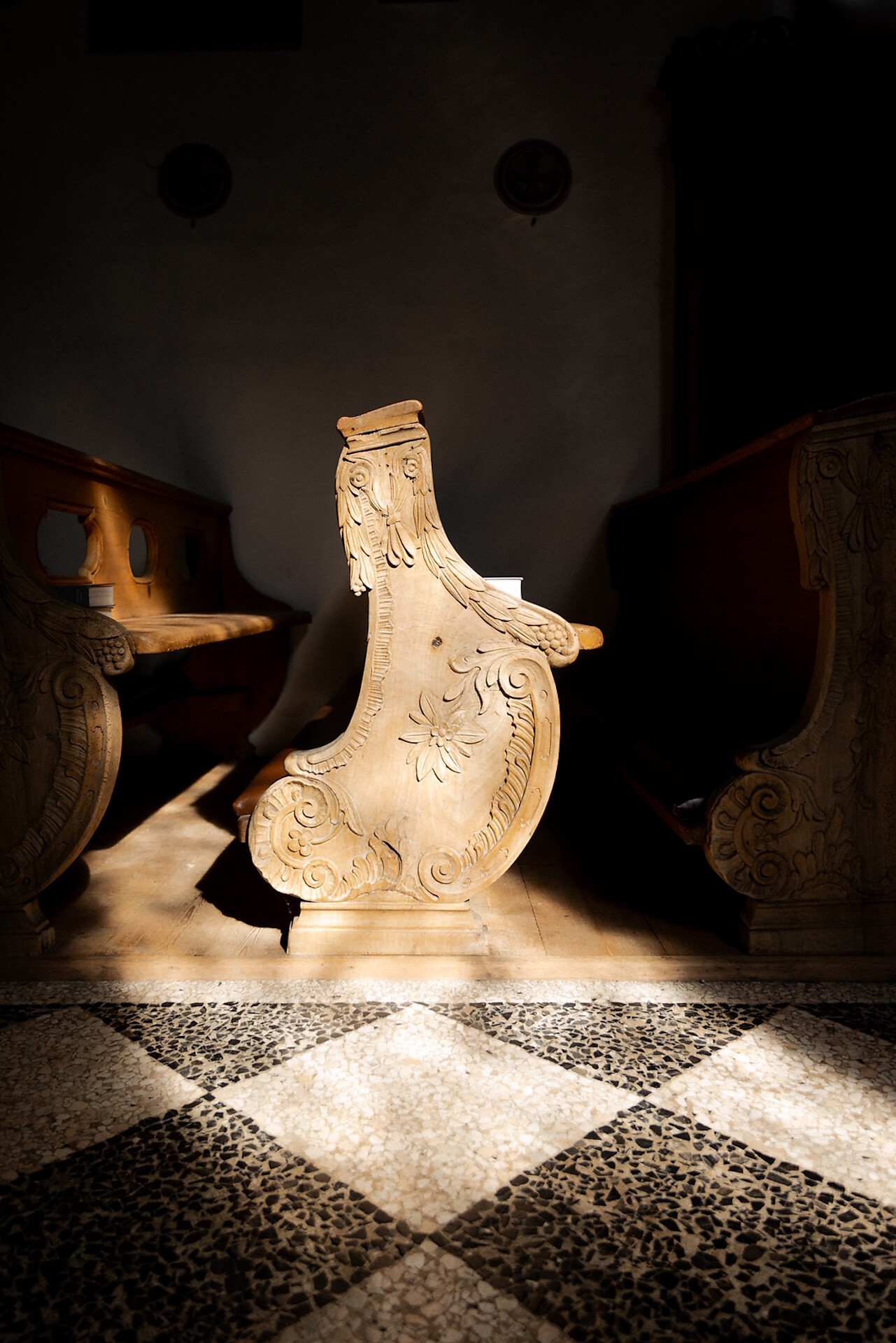A little further north of piazza Gries stands the old parish church of Gries located in the middle of an antique cemetery. It is a late Gothic building, dating back to the early 1400, and hosts two stunning treasures: the altar of Michael Pacher (1471-75) and the Romanesque wooden crucifix of 1200. The first one is undoubtedly a masterpiece of Gothic art of the wooden altars with casket and hatch remaining today, while the second one, which probably in relation to north French sculpture is believed to be of foreign origin, is considered of great relevance.
The church stands in an area which was inhabited ever since Roman times. It was called "Keller", or "Chellare" (cellar), and later named "Gries", or sand. Until 1908 the wine farm of Bishop of Frisinga in Baviera stood next to the church.












































































